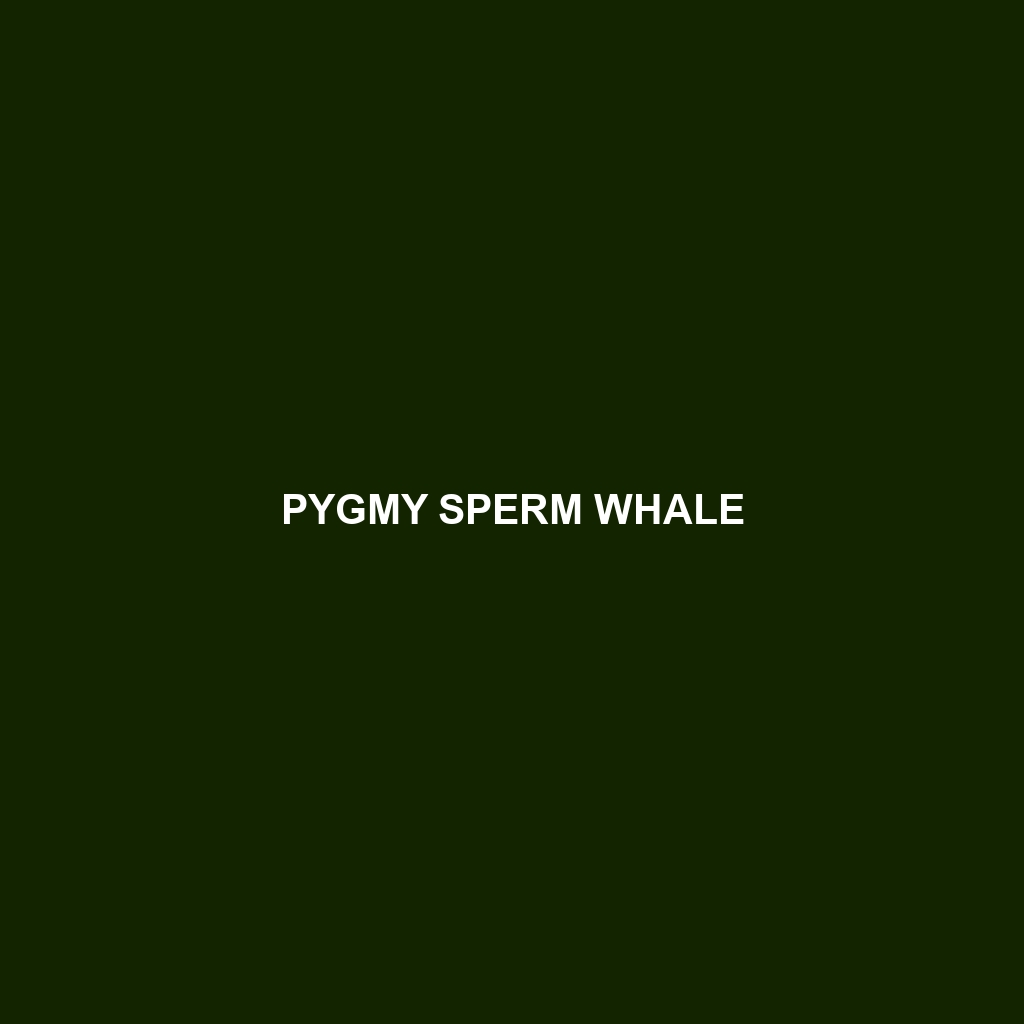Pygmy Sperm Whale
Common Name: Pygmy Sperm Whale
Scientific Name: Kogia breviceps
Habitat
The Pygmy Sperm Whale is primarily found in deep waters worldwide, particularly in the temperate and tropical oceans. They prefer the continental shelf and slopes, and they have been spotted in geographic locations such as the Caribbean Sea, the Gulf of Mexico, and the eastern North Pacific. These whales tend to inhabit offshore waters, often near submerged canyons and continental margins, where they can find ample sources of food.
Physical Characteristics
Pygmy Sperm Whales are small cetaceans, growing to about 2.7 to 3.4 meters (9 to 11 feet) in length. They typically weigh between 300 to 400 kilograms (660 to 880 pounds). Their bodies are robust and have a distinctive shape that includes a broad, bulbous head and a tapered snout. The color of these whales varies from a dark bluish-gray on the dorsal side to a lighter gray or white ventral side. Notable features include a small dorsal fin located towards the back of the body and the presence of a distinctive melon-shaped forehead, which is essential for echolocation.
Behavior
Pygmy Sperm Whales exhibit unique behaviors, primarily being solitary or found in small groups of up to five individuals. They are known for their elusive nature, often avoiding boats. These whales are also recognized for their intriguing behavior of remaining submerged for extended periods, making them challenging to observe. When surfacing, they may show a characteristic “logging” behavior, where they float motionless on the water’s surface.
Diet
The diet of the Pygmy Sperm Whale primarily consists of squid, fish, and crustaceans. They are believed to be opportunistic feeders, utilizing their echolocation capabilities to hunt in the dark depths of the ocean. Their specialized teeth are adapted for gripping slippery prey, and they often feed in the deeper, open waters of their habitat, contributing to their role as an important predator in the marine ecosystem.
Reproduction
Pygmy Sperm Whales reach sexual maturity between the ages of 3 and 5 years. Breeding habits are not fully understood due to their elusive nature, but it is believed that mating occurs year-round with a peak in certain regions during warmer months. Females typically gives birth to a single calf after a gestation period of approximately 10 to 11 months. The calves are nursed for about 6 months and remain dependent on their mothers for a year or more.
Conservation Status
As of the latest assessments, the Pygmy Sperm Whale is classified as “Data Deficient” by the IUCN Red List. Although not currently listed as endangered or threatened, concerns about their population levels arise due to bycatch in fishing gear, habitat degradation, and marine pollution. Conservation efforts are essential to monitor and protect this species from potential threats.
Interesting Facts
Pygmy Sperm Whales have a unique defense mechanism: when threatened, they can expel a reddish-brown substance known as “ink” to confuse predators. This behavior is thought to be a strategy similar to that used by squids. Additionally, they possess an unusually shaped skull that aids in their impressive echolocation abilities, making them fascinating subjects for marine research.
Role in Ecosystem
Pygmy Sperm Whales play a vital role in maintaining the balance of marine ecosystems. As consumers of squid and fish, they help regulate the populations of these species, which in turn affects predator-prey relationships within their environment. Additionally, their interactions with other marine animals, such as sharks and larger cetaceans, contribute to a diverse and dynamic marine community.
